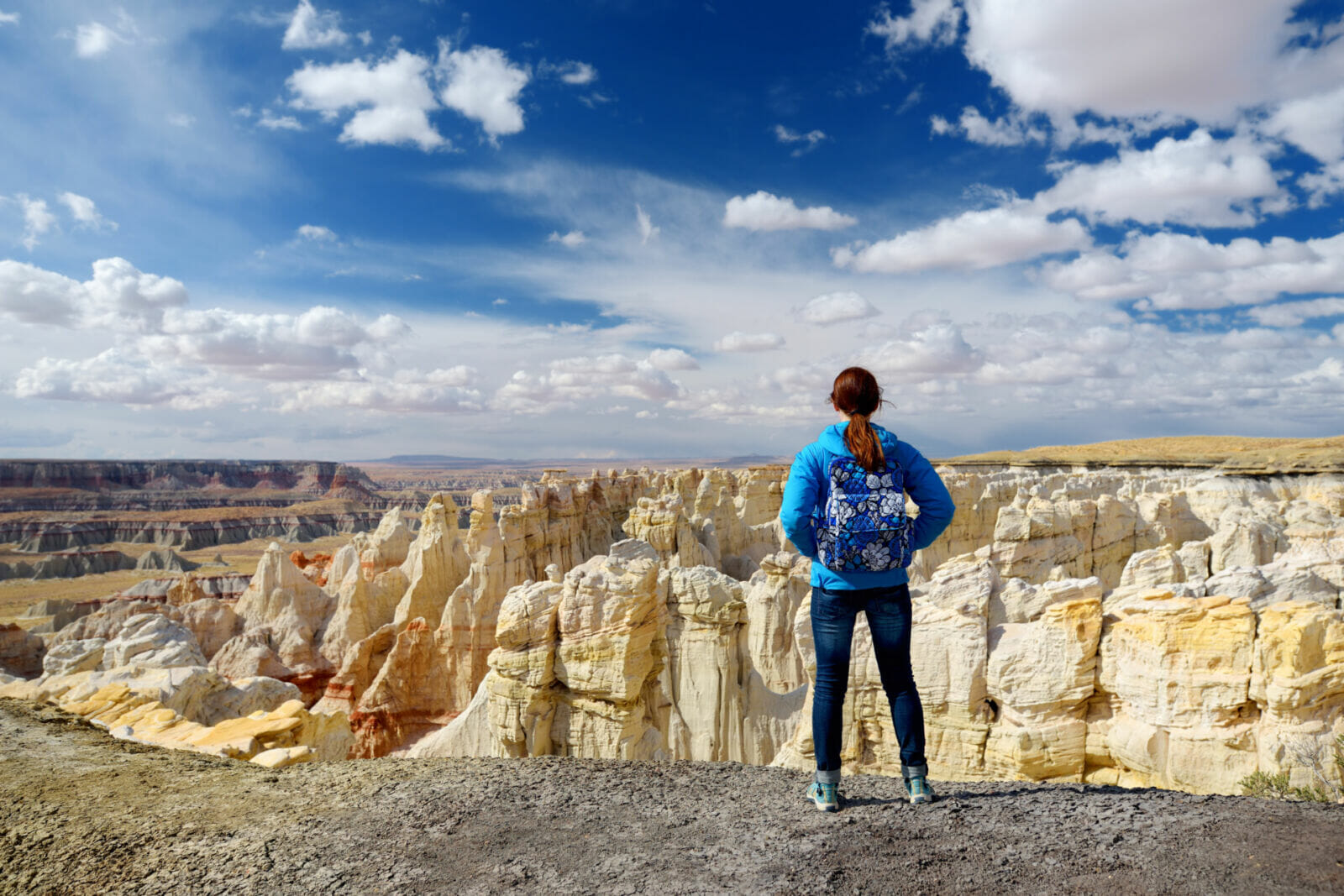Hiking is officially the most popular outdoor activity in America, with the United States now having a population of approximately 59.6 million hikers. According to the American Hiking Society, with a little extra preparation, hiking in the winter can be every bit as enjoyable as hiking during the warmer months.
LEARN MORE: 10 of Arizona’s best hikes
With this in mind, Viator sought to uncover the best states to visit for winter hiking. To do so, the travel experts created a points-based index system that analyzed the number of hike trails, the number of hike trails per 100,00 people, the minimum, maximum and average temperature, average precipitation levels, and the average rating of hike trails in the state—to ultimately reveal each state’s winter hiking suitability.
Top 10 best states for hiking in the colder months

Arizona is the best state to visit for winter hiking
Viator can reveal that Arizona is the best state to visit for hiking in the winter, with a hiking suitability score of 8.04/10. The highest-rated trail in Arizona is the Devil’s Bridge Trail in Coconino National Forest (4.7/5), a moderately difficult 6.3 km out-and-back trail near Sedona. Arizona is home to 3,240 hiking trails, which is equivalent to 43.47 trails per 100,000 people, and an average trail rating of 4.5/5—making the state a top choice for travelers looking to experience the dramatic scenery and serenity that winter hiking can provide. Whilst some hikers may think to avoid walking trails in the colder months, the state’s average temperature is 64.03⁰F (17.79°C) with an average precipitation of just 2.83 inches. In comparison, Arizona’s neighboring state Colorado is 16.36 degrees cooler, with 25% more precipitation.
In second place is New Mexico, with a winter hiking suitability score of 7.73/10. Travelers visiting the state can explore as many as 73.22 hiking trails per 100,000 people, with 1,545 trails in total. This is 57.96 more hiking trails per capita than in the state of Nebraska, despite having a similar population (15.26). The top trail in New Mexico is the Wheeler Peak via Williams Lake Trail, a challenging 14 km out-and-back trail near Taos Ski Valley, although hikers looking for an easier route may prefer Alcove House Trail—a 4 km circular trail near Los Alamos.Hiking trails in New Mexico have an average rating of 4.5/5, highlighting the beauty of the trails, which include idyllic lakes, picturesque tree lines, and a mountainous landscape to take in. With average temperatures of 54.67⁰F (12.59°C) and 3.71 inches of precipitation, mild conditions in New Mexico make it a top choice for winter hiking this season.
Yosemite National Park, California, is among the top spots for winter hikes
California ranks third, with a winter hiking suitability score of 7.43/10. The state of California is home to the highest number of hiking trails in the US, with 12,422 trails for travelers to visit and explore, equating to 31.92 per 100,000 people. With the second-warmest average temperature in the top 10 (62.81⁰F, 17.11°C) and the second-lowest precipitation levels (2.97 inches), conditions in the state are ideal for winter hiking. The highest-rated trail in California is the Vernal and Nevada Falls trail in Yosemite National Park, a popular but challenging 10.3 km circular hike near Yosemite Valley. For less experienced hikers, the Lower Yosemite Falls Trail is a 1.9 km circular trail that takes just 24 minutes to complete and provides waterfall views.
Tips for winter hiking
Winter hiking in the US offers a beautiful and rewarding experience but can also present its own set of challenges. We travel experts at Viator have provided our top tips for winter hiking:
Choose the right trail for you
Use resources or apps like AllTrails, which ranks trails by difficulty, provides information about length and elevation, and allows you to choose the right trail based on user reviews. Hikes are typically categorized as easy, moderate, or challenging—make sure to select your trail based on your realistic capabilities, ensuring that your choice aligns with your current physical condition for a safe and enjoyable outdoor experience. As a general guideline, consider selecting hikes with elevation gains of around 500 feet per mile or less, and gradually progress from there.
Check the weather and trail conditions
Before setting out, review the day’s weather forecast and the specific trail conditions thoroughly. Check recent reviews for insights into current trail conditions, potential hazards, and the trail’s suitability for winter hiking. This can help you make informed decisions based on real-time information from other explorers. Be aware of any recent snowfall, icy patches, or other potential hazards that might affect your hike. Additionally, consider the elevation you’ll be traveling at, as temperatures can vary significantly with altitude.
Make sure to keep warm and dress for the weather
Make sure to regulate your body temperature by dressing in layers, and wear insulated, waterproof boots with good traction. When hiking in cold weather, it’s recommended to wear 3 layers as well as a neck warmer. Don’t forget to use insulated gloves or mittens, a hat that covers your ears, and warm socks. Consider carrying hand warmers and be prepared with extra layers in case of unexpected weather changes. Be proactive about adding or removing layers when you begin to feel chilly or start to sweat, as adjusting your clothing strategically throughout the hike will help to manage your body heat effectively.
Set off early and choose sunnier trails
Start your winter hike early to maximize daylight hours, especially considering the earlier sunsets during winter. Choose trails that receive ample sunlight to enhance visibility and make navigation safer. Be conscious of the time to avoid being caught in darkness, and always carry a reliable headlamp or flashlight as a precaution. Planning for daylight ensures a more enjoyable and safer hiking experience, allowing you to appreciate the winter landscape without concerns about navigating in the dark.
Make sure to stay hydrated and bring snacks
Ensure you carry an adequate supply of water and high-energy snacks for your winter hike. Staying hydrated is crucial even in cold weather, and having nutritious snacks can help to maintain your energy levels. Consider using an insulated water bottle or a hydration system to prevent water from freezing, and pack snacks that won’t be affected by low temperatures. Maintaining your stamina and keeping warm in winter conditions is particularly important on more challenging and lengthy hikes.




